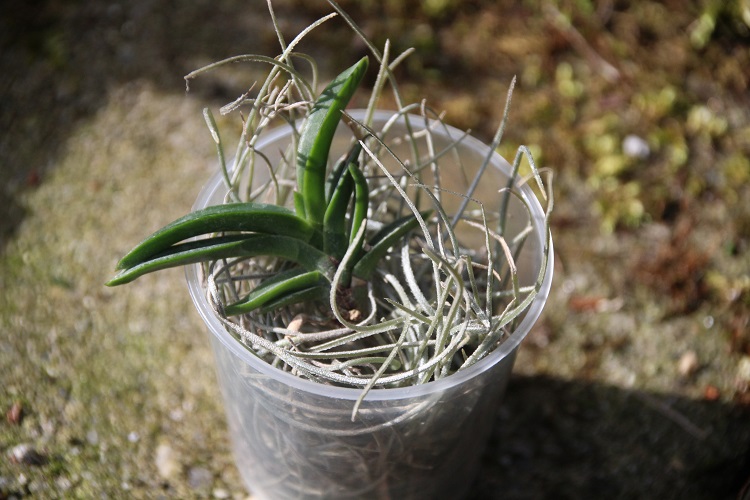Vanda falcata x Vandachostylis Rainbow Stars

19th March 2021
A complex hybrid. At the base of it's pedigree is a hybrid between the blue Vanda Rothschildiana (V. coerulea x V. sanderiana) and Rhynchostylis coelestis.
This produces a grex called x Vandachostylis Blue Angel. The parents and the name suggest that the original intention was to produce a blue flowered hybrid.
Rhynchostylis coerulea is a compact plant from Thailand, Cambodia and Vietnam which will grow under cooler conditions than the large flowered blue vandas.
Again, I assume the intention was to produce a smaller, more manageable plant for a less warm environment.
x Vandachostylis Blue Angel was then crossed with Vanda Ophelia, a larger flowered Vanda hybrid. I assume it was done
somewhere that warm growing conditions were not a major issue. The hybrid is called x Vandachostylis Tham Yuen Hae. The hybrid generally
has dense spikes of blue flowers on moderately compact plants.
x Vandachostylis Tham Yuen Hae has then been crossed repeatedly with Vanda falcata. The only reasoning that I can see in the hybrid is the production
of cold hardy vandas, similar to V. falcata but with blue flowers.
The first cross of x Vandachostylis Tham Yuen Hae with V. falcata is called x Vandachostylis Charm, made by O. N. Takaki and registered in 1987.
The second cross of x Vandachostylis Charm to V. falcata is called x Vandachostylis Rainbow Stars, registered by P. T. Lin in 2009.
This plant is a very small hybrid with flowers that can range from dark magenta-pink to purple-blue. In Japan it is referred to as Neofinetia 'Benihime'.
My plant is the third cross, x Vandachostylis Rainbow Stars x Vanda falcata. The x Vandachostylis Rainbow Stars used as a parent was a blue clone
so presumably the intention was to create a blue flowered hybrid that otherwise looked and behaved like Vanda (Neofinetia) falcata). The grex does not seem to have been named
and I am not aware of a Japanese name for the hybrid (which does not mean there isn't one, just that I haven't yet found it).
If my plant grew into a blue flowered equivalent to Vanda falcata I would be delighted.
References:
Internet Orchid Species Photo Encyclopedia, https://www.orchidspecies.com
RHS International Orchid Register online, https://apps.rhs.org.uk/horticulturaldatabase/orchidregister
